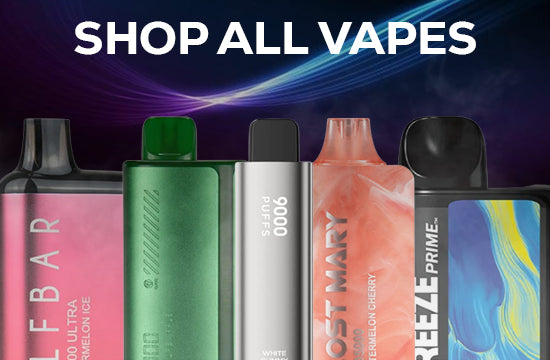Battery swelling occurs when gases build up inside a lithium-ion battery, causing the battery cells to expand and the overall device to bulge or deform. This phenomenon is most commonly triggered by factors such as overcharging, exposure to high temperatures, physical damage, or internal battery faults. In the context of the Elf Bar BC5000, a rechargeable disposable vape, battery swelling is a clear signal that the internal chemistry of the battery is compromised and that the device may no longer be safe to use.
While the Elf Bar BC5000 is designed with built-in safety features to prevent overcharging and overheating, these protections are not infallible. Continuous exposure to adverse charging conditions or aging can still result in battery stress and swelling. Early detection of swelling is essential to prevent further damage and ensure user safety.
Physical Signs of Early Battery Swelling
The most apparent early sign of battery swelling is a visible change in the device's shape or structure. You may notice that your Elf Bar BC5000 no longer sits flat on a surface, or that its body appears slightly warped or bulged. The seams of the device might begin to separate, or the casing may feel unusually thick or distorted. In some cases, the mouthpiece or screen may appear pushed outward due to internal pressure from the swelling battery.
Another physical indicator is the presence of gaps or lifting between components. As the battery swells, it exerts pressure on the internal structure, which can cause the outer shell or screen to lift away from the frame. This not only affects the device's aesthetics but also increases the risk of exposing sensitive internal components to environmental factors or further damage.
Functional and Performance-Related Early Signs
Beyond physical changes, battery swelling can manifest in several functional and performance-related symptoms. One of the most common is overheating during use or charging. If your Elf Bar BC5000 becomes excessively hot—especially when connected to a charger—this is a strong warning sign of internal battery stress and possible swelling. Overheating should never be ignored, as it can escalate quickly and pose a serious safety risk.
Another early indicator is rapid battery drain or inconsistent battery performance. A swollen battery may lose its ability to hold a charge effectively, causing the device to discharge faster than normal or to shut off unexpectedly even when the battery indicator shows remaining charge. You might also notice erratic behavior, such as the device not charging properly, LED indicators flickering, or the device failing to turn on.
If you have attempted to clean the charging port and your Elf Bar BC5000 still doesn't charge after cleaning the charging port, this could be a sign of deeper internal issues, including battery swelling. Charging problems that persist despite cleaning the port may indicate that the battery is compromised and should be handled with caution.
Additional Warning Signs
Other warning signs of early battery swelling include unusual odors, such as a chemical smell emanating from the device. This odor can indicate that the battery is leaking or that internal gases are escaping, both of which are serious safety concerns. Visible leakage or residue around the battery compartment or charging port is another red flag and should prompt immediate action.
Performance issues such as unexpected restarts, lagging, or the device not turning on at all can also be associated with battery swelling. Some devices may display warning messages or error codes if the battery's health is compromised, though this feature is less common in disposable vapes like the Elf Bar BC5000.
What to Do If You Suspect Battery Swelling
If you observe any of the early signs of battery swelling in your Elf Bar BC5000, it is essential to stop using and charging the device immediately. Continuing to use a swollen battery can lead to further damage, leakage, or even fire. Place the device in a cool, well-ventilated area away from flammable materials, children, and pets.
Do not attempt to puncture, compress, or otherwise tamper with the device, as this can release hazardous chemicals and increase the risk of injury. If your Elf Bar BC5000 doesn't charge after cleaning the charging port and you notice any physical deformation or overheating, it is best to stop all attempts to use or charge the device and seek professional advice or dispose of it safely according to local regulations.
Preventing Battery Swelling in the Elf Bar BC5000
Preventing battery swelling is largely a matter of responsible device care and charging habits. Always use the manufacturer-recommended charger and cable, and avoid using damaged or counterfeit accessories. Do not leave your device charging unattended or overnight, and unplug it as soon as it is fully charged. Store your Elf Bar BC5000 in a cool, dry place away from direct sunlight and extreme temperatures.
Regularly inspect your device for signs of wear or damage, and keep the charging port clean and free of debris. By following these best practices, you can help ensure the longevity and safety of your Elf Bar BC5000 and minimize the risk of battery swelling.
Conclusion
Early detection of battery swelling in your Elf Bar BC5000 is essential for maintaining device safety and performance. Physical signs such as bulging, warping, or separation of the casing, combined with functional symptoms like overheating, rapid battery drain, and persistent charging issues—including when your device doesn't charge after cleaning the charging port—are all strong indicators of battery swelling. If you suspect your device is affected, stop using it immediately and take appropriate safety measures. By staying vigilant and practicing responsible device care, you can help prevent battery swelling and ensure a safer vaping experience.


